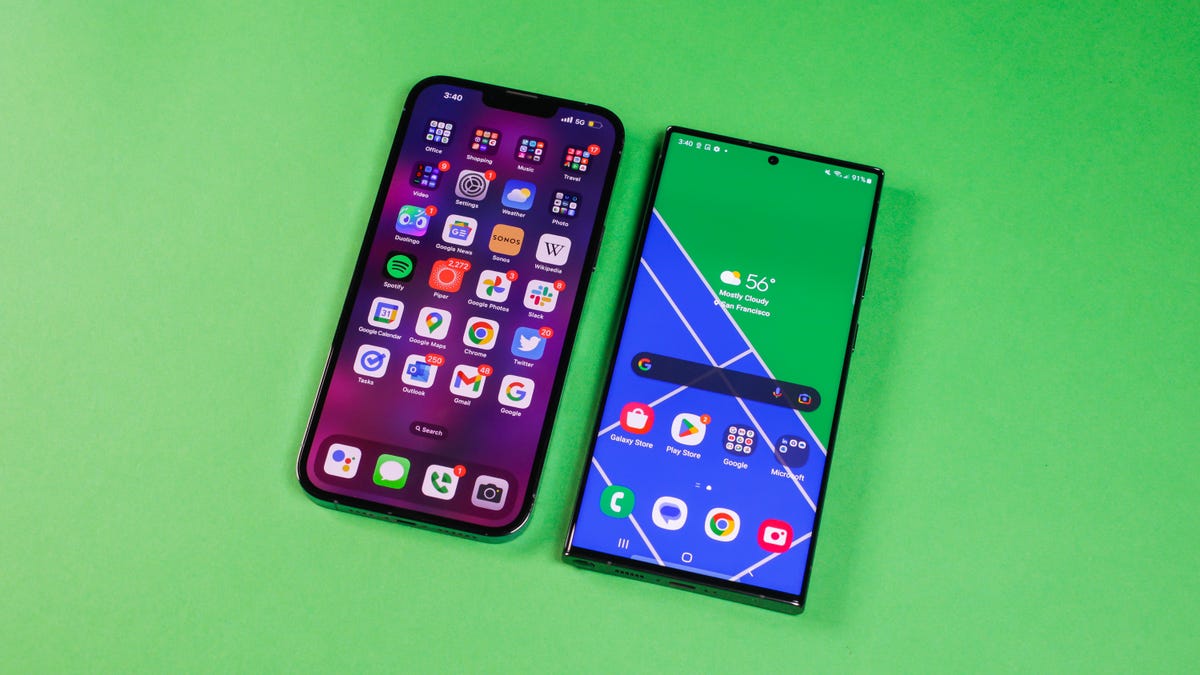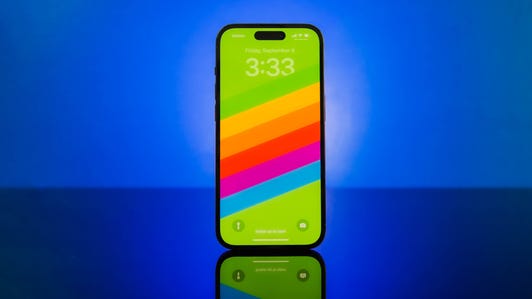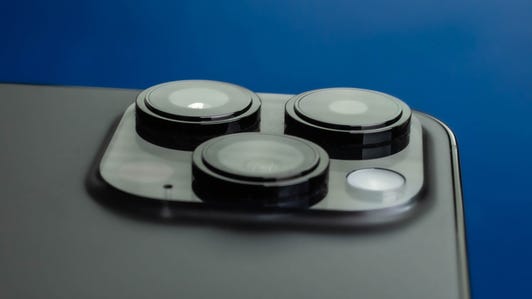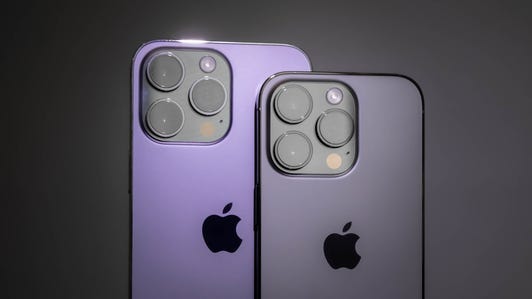This story is part of Samsung Event, CNET’s collection of news, tips and advice around Samsung’s most popular products.
A phone’s camera bridges our everyday lives with our online identities, whether you’re sharing family photos, posting clips from your vacation on TikTok or dialing into a Zoom meeting. Apple and Samsung clearly understand this, as evidenced by the iPhone 14 Pro and the new Galaxy S23 Ultra, which goes on sale Feb. 17. With both devices, Samsung and Apple are sending a strong message: The camera is what matters most in a new phone. It’s the biggest factor that separates the best phone money can buy from reasonably priced devices.
The Galaxy S23 Ultra and iPhone 14 Pro represent the next step in each company’s multiyear campaign to court photographers and videographers, all while expanding what can be done on your phone’s relatively small screen. They’re the culmination of the latest efforts by Apple and Samsung to outpace one another in an arms race that’s been progressing for more than a decade. Apple and Samsung aren’t the only ones focused on the camera; the same goes for Google and OnePlus. But as the world’s two largest phone brands by market share, Apple and Samsung have an outsized influence over the devices we carry in our pockets.
Annual smartphone updates feel incremental, making it harder for people to justify yearly upgrades, especially when the cost for everyday goods and services remains high. The latest high-end phones from Apple and Samsung serve as statements that customers are willing to pay for the best. And for both companies, being the “best” often means having the best camera.
Samsung and Apple bet people will spend more on better devices
Cameras with a 100x digital zoom magnification and a nearly tablet-sized screen aren’t for everyone, especially given their high price. As generational upgrades become less flashy, customers are holding onto their devices longer before upgrading. But there is evidence hinting that premium phones still appeal to shoppers despite inflation, potentially showing that Apple and Samsung’s camera-first approach may be working.
According to Counterpoint Research, the iPhone’s average selling price increased 7% year over year in the third quarter of 2022, indicating Apple’s more expensive phones may be its most popular. (However, that could also be because the price of Apple’s regular iPhones has increased over the years, while the Pro’s starting price has largely remained the same).
Ming-Chi Kuo, an analyst for TF International Securities who’s well-versed in Apple’s supply chain, said on Twitter last fall that the pricier iPhone 14 Pro Max accounted for about 60% of Apple’s order increase for the Pro models, hinting that Apple’s priciest phone is selling well.
TM Roh, head of Samsung’s mobile experience business, said in an interview with CNET earlier this year that the Galaxy S22 lineup saw double-digit sales growth compared to the Galaxy S21 series. That indicates Samsung’s more expensive phones are indeed top sellers.


Apple and Samsung are both leaning into the premium phone market.
James Martin/CNETRemarks from Roh and Apple CEO Tim Cook also suggest that people are simply willing to pay for better devices.
“When times get hard, then people would be more cautious in the choices that they make,” Roh also said to CNET. “In other words, they would be looking for greater value to be gained.”
Speaking with analysts during Apple’s fiscal first-quarter earnings call earlier this month, Cook said he thinks “people are willing to really stretch to get the best they can afford in that category.”
Samsung’s and Apple’s current premium phones could also influence the devices we see in the future as both companies are expected to lean more heavily into high-end devices. Apple is discussing releasing an iPhone Ultra that would be a step up from the $1,099 iPhone 14 Pro Max, according to Bloomberg, likely expanding upon the Pro Max’s features. It may also incorporate more features into next year’s iPhone Pro that further distinguish it from the regular iPhone, the report said. One of those features, Bloomberg reported, could be a periscope lens for better optical zoom on the Pro Max, further underscoring the camera’s significance.
Samsung, meanwhile, used its previous high-end smartphone line, the Galaxy Note, to build the foundation for its current Galaxy Ultra devices. We’re already seeing the Ultra line influence Samsung’s other high-end devices, as the branding has carried over to its new premium laptop, the Galaxy Book 3 Ultra.
What makes an “ultra” or “pro” phone? Mostly the camera


The camera is the centerpiece of both the iPhone 14 Pro and Galaxy S23 Ultra.
James Martin/CNETMake no mistake, Apple and Samsung both view the camera as the most significant smartphone upgrade that customers are willing to splurge for. Samsung made that clear at its Unpacked event on Feb. 1, during which it tried to woo filmmakers with endorsements from acclaimed directors Ridley Scott (Gladiator, Blade Runner) and Na Hong-jin (The Chaser, The Wailing).
Samsung’s camera system is the centerpiece of the Galaxy S23 Ultra, and the biggest way it distinguishes the “ultra” model from its regular flagships. The company spent a large portion of its Unpacked presentation outlining the various new camera improvements: a higher-resolution 200-megapixel sensor, wider dynamic range, steadier optical image stabilization for video, faster autofocus and clearer shots in low light, among other upgrades. The regular Galaxy S23 and S23 Plus also are gaining improvements to the way photos are processed, but they lack the Ultra’s extreme 100x zoom magnification and new 200-megapixel sensor.
If you weren’t already convinced that Samsung is trying to entice camera enthusiasts, the company also makes it easier to access settings for shooting raw files by integrating those options directly into the native camera app. A raw file has uncompressed image data straight from the camera sensor, which allows for more leeway when editing. An Expert Raw file contains data from several images processed together and offers even more clarity and a wider dynamic range. Google and Apple have their own special raw files that are created in a similar way, bridging a traditional raw file with advancements from computational photography.
And to help fit all of those big files on your phone, the S23 Ultra’s base storage is now 256GB, up from the S22 Ultra’s 128GB. The decision to offer more storage in the entry-level model could also be seen as another effort to attract photographers and videographers, since high-resolution photos, raw files and 8K videos occupy a lot of space. The S23 Plus also starts at 256GB, but Samsung doesn’t offer a 1TB storage option for that phone the way it does with the S23 Ultra. It shows what a long way Samsung has come since launching its original Ultra phone, the Galaxy S20 Ultra, which maxed out at 512GB and started at 128GB just like the regular Galaxy S23.
Apple also loves to flaunt the iPhone’s photography prowess, and you could even argue that may have influenced some of Samsung’s thinking. That approach was on full display in September when Apple unveiled the iPhone 14 Pro, which has better optical image stabilization and low-light performance. Like Samsung, Apple also made a leap in resolution that brings the iPhone 14 Pro’s camera from 12 to 48 megapixels, although it’s really the device’s larger main sensor that’s made a big difference in the camera’s low-light performance. ProRaw, Apple’s feature for capturing raw photos that still incorporate some of the company’s image-processing algorithms, can now shoot at a 48-megapixel resolution.
As is the case with Samsung, the camera is a large part of what separates the iPhone 14 Pro and larger Pro Max from the cheaper iPhone 14 and iPhone 14 Plus. Those phones, by comparison, are missing the iPhone 14 Pro’s telephoto lens and have a smaller 12-megapixel main camera sensor. Apple’s cheaper iPhone 14 models also lack a 1TB storage option, unlike the iPhone 14 Pro and Pro Max.
The camera is the star, but there’s more to it
While the camera may be the biggest defining characteristic of Apple’s Pro line and Samsung’s Ultra line, there are other common threads between these phones. Both phones have more productivity-oriented features than the cheaper alternatives in their respective lineups. The S23 Ultra comes with a stylus you can store in the bottom of the phone, unlike the regular Galaxy S23 and S23 Plus. The iPhone 14 Pro has the Dynamic Island, a clever software interface built around the selfie camera for showing system alerts and controlling background activities without leaving the app you’re using. That feature is absent from the regular iPhone 14 and iPhone 14 Plus.
Both phones also have more to offer when it comes to the screen. For Samsung, that’s quite literal; the Galaxy S23 Ultra’s 6.8-inch screen is physically larger than the displays on the Galaxy S23 (6.1 inches) and the S23 Plus (6.6 inches). Apple offers the same two display sizes across the entire iPhone 14 lineup (6.1 inches or 6.7 inches), but has found other ways to make the screens on its Pro iPhone’s stand out. Only the Pro models have an always-on display, the Dynamic Island and an adaptive refresh rate for smoother scrolling and graphics.


Samsung’s and Apple’s high-end phones have more of a focus on the display compared to their cheaper devices. For Samsung, it’s about size, while Apple offers extra perks like an always-on screen and an adaptive refresh rate.
James Martin/CNETDespite these similarities, Apple and Samsung’s approaches also differ in significant ways — mostly when it comes to which technologies these companies bring to cheaper devices. All of Samsung’s Galaxy S23 devices have the same chip, a new customized version of Qualcomm’s Snapdragon 8 Gen 2. Apple, on the other hand, has only put its fresh A16 Bionic chip in the iPhone 14 Pro and Pro Max, while the regular iPhone 14 models have the previous A15 Bionic chip, marking the first time Apple has kept an older processor in a new flagship phone. Apple also equips its Pro iPhones with a lidar scanner for detecting depth, which helps improve AR apps and certain photography features like autofocus and enables accessibility functions like door and people detection.
For Apple and Samsung, adding more advanced camera and display features to their premium phones isn’t just about boosting sales. Both companies are under pressure to uphold their reputations as innovators while proving there are still plenty of reasons to be excited about the smartphone’s future.
Right now, many of those reasons come down to the camera — the tool we use for everything from video chatting to documenting vacations and, perhaps in the future, fueling augmented reality apps. It will be fascinating to see how Apple, Samsung and others attempt to improve and redefine that experience over the next few years.






